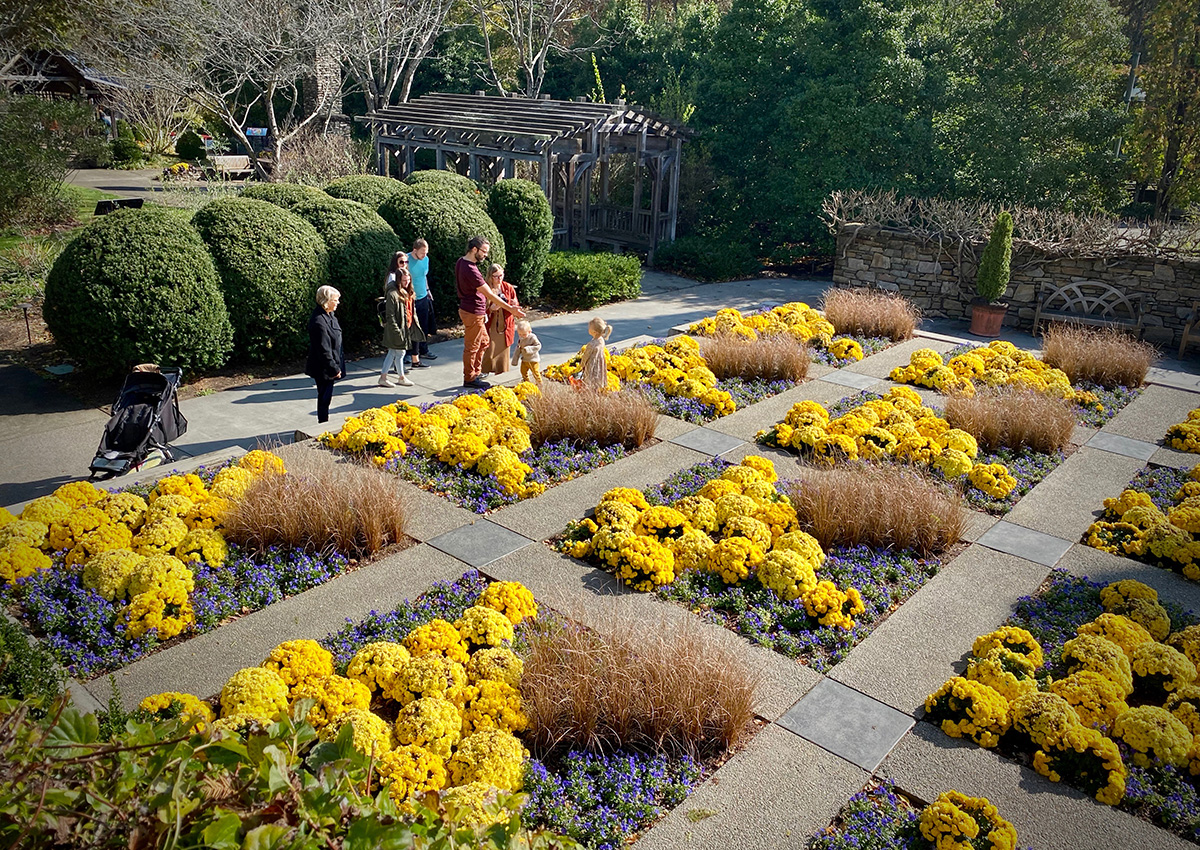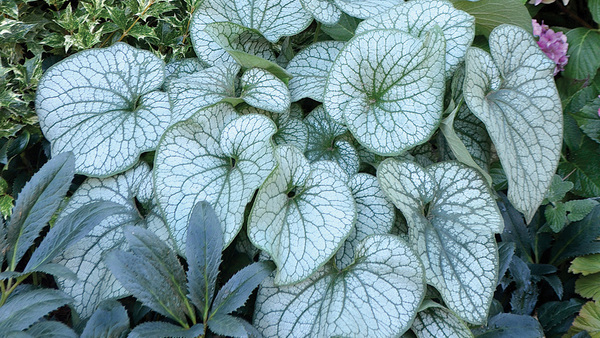
As if there wasn’t enough to do in beautiful Asheville, North Carolina, the North Carolina Arboretum stands out as a must-visit location. Not only is it a great place for the serious gardener, but it also has hiking and biking trails for all ability levels. If you have a few hours, or the whole day, this is a place you will want to explore.

Walk the gardens
With 434 acres, this public garden really has something for everyone. The footprint of the main display gardens is long and linear. You will find gardens that are a tasteful combination of whimsy and formality. Without a doubt, each garden reflects the character of its location. This is very evident in the Heritage Garden, which features a chimney and stone foundation that recall the features of an old homesite. The Quilt Garden is a flora representation of traditional quilt patters and changes with the seasons. From the terrace above the Quilt Garden, you will be treated to a long vista overlooking the Forest Meadow, a garden with a backdrop of mountain ridges and the Blue Ridge Parkway.

Check out the bonsai
Unlike any other regional collection, the North Carolina Arboretum has a collection of 100 bonsai trees, 50 of which are on display at any given time. Of course, you will see traditional bonsai plants of Asian origin like Japanese maple (Acer palmatum and cvs., Zones 5–9) and ginkgo trees (Ginkgo biloba, Zones 3–8). However, many of the arboretum’s bonsais are distinctly Appalachian and native to the region. You will find American hornbeam (Carpinus caroliniana, Zones 3–9) and Eastern white pine (Pinus strobus, Zones 3–8) displayed. Additionally, the winding path through the bonsai collection is full of beautiful plant material that reflects the native landscape of the Southeastern United States.

A place for art lovers
Not only does the North Carolina Arboretum often have interesting indoor art exhibits in its education center, but the gardens are also full of memorable artwork. Perhaps one of the most striking pieces is a larger-than-life-size sculpture of the father of landscape architecture, Frederick Law Olmsted. This sculpture, added to the garden in 2016, was created by internationally known artist Zenos Frudakis. As you walk the gardens, you are sure to notice many memorable pieces.

Explore the trails
It is always worth the time to explore the trail system that meanders throughout the arboretum property. There are many options for a visitor to take a short stroll or a more involved hike through the native woodlands of the Southern Appalachian Mountains. One particularly nice stretch of trail follows the winding Bent Creek and contains wonderful patches of native rhododendron (Rhododendron spp., Zones 4–9) and mountain laurel (Kalmia latifolia, Zones 4–9).

Take your time
For many gardeners in the easternmost stretches of the Southeastern region, western North Carolina is more than a day trip. Beyond the North Carolina Arboretum, there is ample opportunity for the horticulturally inclined traveler. The nearby Biltmore Estate is world renowned for its gardens. In fact, many visitors may come to the region to see the Biltmore but miss the North Carolina Arboretum. Don’t let this be the case when you visit. The arboretum is a truly outstanding garden that fits perfectly into the character of the region. Find out more about the arboretum, visiting hours, and safety protocols on its website.
—Andy Pulte is a faculty member in the plant sciences department at the University of Tennessee.
Fine Gardening Recommended Products

Buffalo-Style Gardens: Create a Quirky, One-of-a-Kind Private Garden with Eye-Catching Designs
Fine Gardening receives a commission for items purchased through links on this site, including Amazon Associates and other affiliate advertising programs.

A.M. Leonard Deluxe Soil Knife & Leather Sheath Combo
Fine Gardening receives a commission for items purchased through links on this site, including Amazon Associates and other affiliate advertising programs.

Alpine Corporation 28" Tall Outdoor Birdbath with Scrollwork Decoration Yard Statue
Fine Gardening receives a commission for items purchased through links on this site, including Amazon Associates and other affiliate advertising programs.



















Comments
Log in or create an account to post a comment.
Sign up Log in